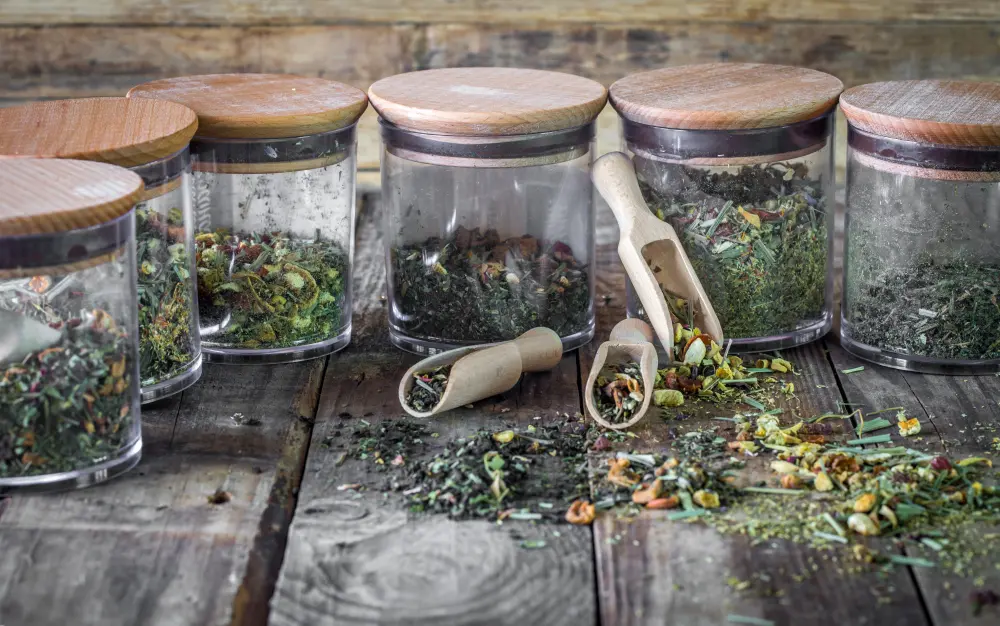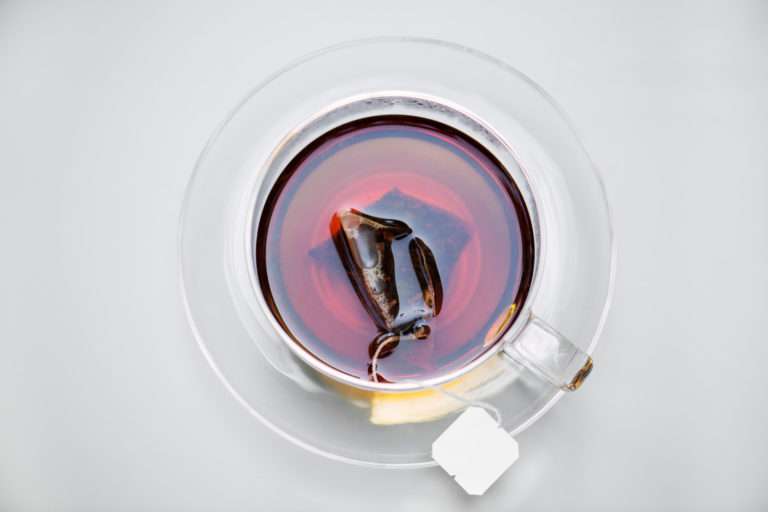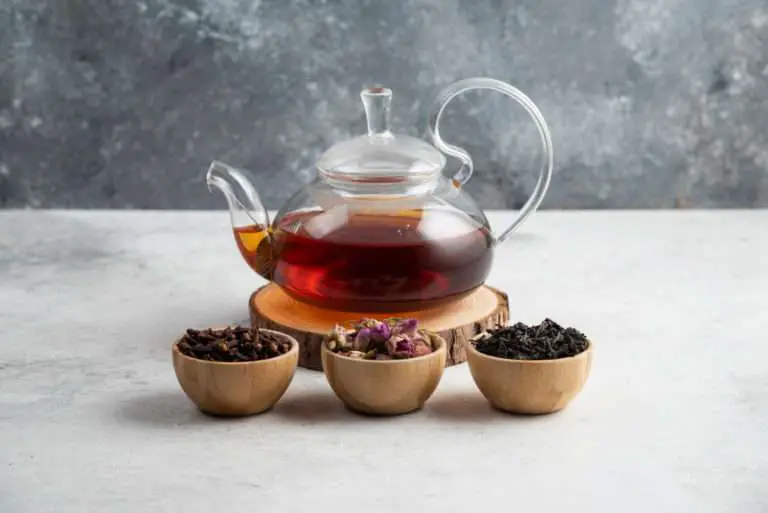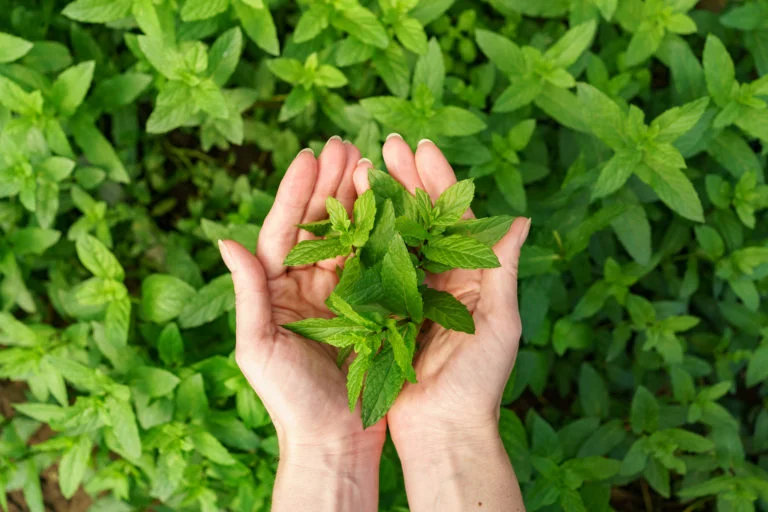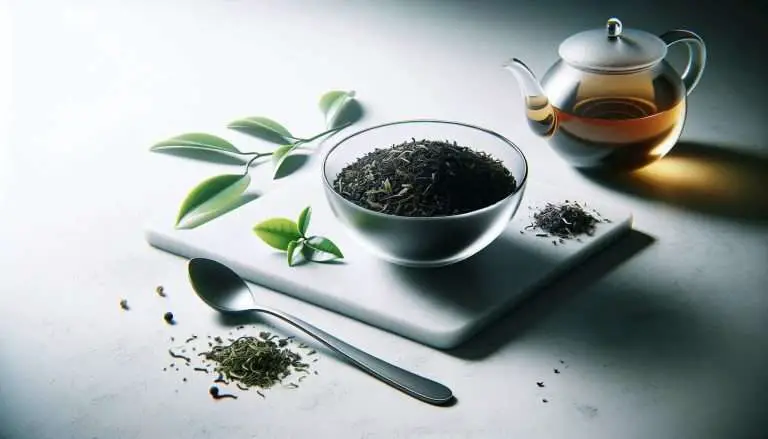12 Secrets to Creating the Perfect Homemade Tea Blending Kit
A homemade tea blending kit allows you to easily create customized tea blends in your own kitchen. With a simple DIY kit, you can mix and blend teas to match your taste preferences precisely.
Blending your own tea means you control the ingredients and freshness. You can combine high quality loose leaf teas like black, green, white, or oolong with your choice of herbs, spices, fruits and more. The options are endless for crafting signature blends.
The main benefits of making your own DIY tea blending kit include:
- Blend teas perfectly suited to your taste
- Use fresh, high grade loose leaf teas
- Customize ingredients to your preferences
- Create unique flavor combinations
- Make tea blends fresher than store-bought
- DIY TEA FLAVORING KIT: Now you can mix & match to create your own loose leaf tea
This article will teach you how to assemble the ideal homemade tea blending kit. With these simple tips and secrets, you’ll be blending vibrant, flavorful teas in no time.
What is Tea Blending?
Tea blending refers to the process of mixing different types of teas, herbs, spices, fruits and other ingredients together to create a unique and customized tea flavor profile.
Some key points about tea blending:
- It involves combining tea leaves, herbs, dried fruits, flowers, spices, essences and more to make signature blends.
- Popular teas used for blending as base ingredients include black, green, white, oolong, rooibos and other herbal teas.
- Additional ingredients are selected to complement and enhance the base tea’s flavor. Common extras include cinnamon, ginger, cardamom, vanilla, mint, fruits, flowers.
- Blending allows tea drinkers to become amateur tea sommeliers and create teas catered to their personal tastes.
- Tea leaves and ingredients can be blended using different techniques like layering or pre-mixing.
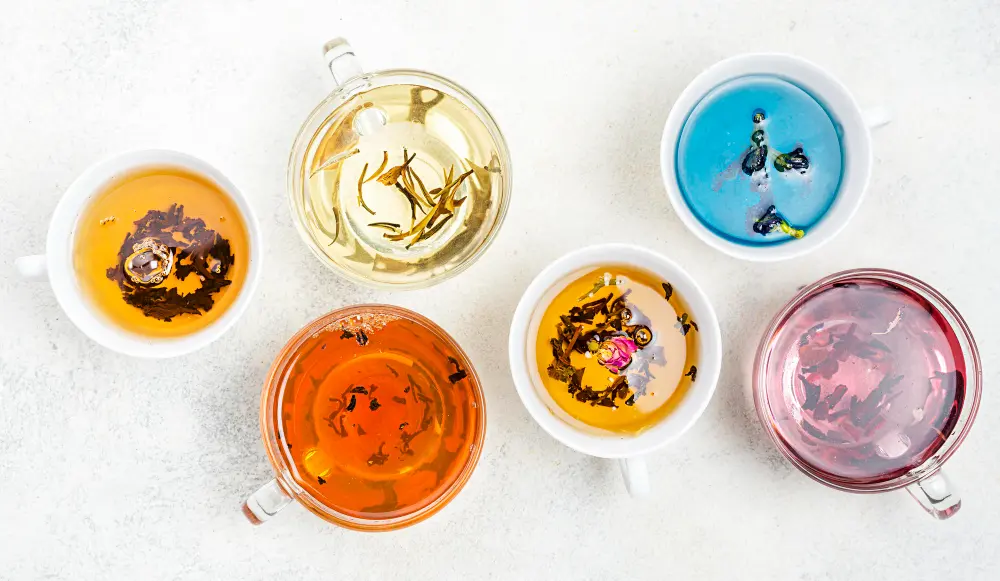
- Homemade tea blending kits make it easy for anyone to experiment with blending their own tea recipes.
- Tea blending requires finding the right balance of flavors and strength through trial and error.
- Well-blended teas can offer more nuanced, complex flavors compared to single origin teas.
- Commercial tea blends are also created by professional tea companies and sold pre-packaged.
In summary, tea blending is both an art and science of mixing various tea leaves, herbs, spices, fruits and other ingredients to produce unique flavor combinations and customized tea drinking experiences.
Homemade Tea Blend Formula
- Decide on the type of tea you want to use as a base. Popular bases include black tea, green tea, white tea, oolong tea, rooibos, or herbal tea. The base tea will form the backbone of your blend.
- Choose 2-4 complementary ingredients to mix with your base tea. Some popular ingredients are dried fruits (e.g. berries, apple pieces), herbs (e.g. mint, lavender), spices (e.g. cinnamon, cardamom, ginger), flowers (e.g. jasmine, rose, chamomile) or tea of a different variety.
- Use ingredients in different proportions to achieve the desired flavor profile. A general guideline is to use about 1 part flavoring ingredient to 3-4 parts base tea. But feel free to experiment with the ratios.
- Mix the ingredients well in a large bowl to distribute them evenly before storing in an airtight container.
- Allow the blend to sit for 24-48 hours before brewing so the flavors can meld together.
- Start with small test batches (like 1 cup at a time) and tweak the proportions as needed until you find your perfect blend.
- Give your custom tea blend a fun, creative name that captures the flavor profile you’ve created.
- Consider the brewing guidelines of the base tea and adjust the water temperature/steeping time if needed to properly extract all the flavors.
- Enjoy experimenting with different ingredient combinations until you find your signature tea blend! The options are endless.
- Chai Variety Pack: This chai tea sampler includes 1 box each of Chai Spice, Double Spice Chai, Green Chai, Golden…
Secret #1 – Select 3-5 Complementary Tea Bases for Your Homemade Blending Kit
Choosing the right tea bases to include in your homemade tea blending kit is the first critical step.
The teas you select as your base provide the underlying flavor foundation that your other ingredients will complement and enhance.
Aim to choose 3-5 high quality, complementary tea bases for your DIY tea blending kit. Here are some popular options to consider:
Black Tea
Black tea has a robust, bold flavor that makes an excellent base for blending. The rich taste stands up well to mixing in spices, herbs, citrus, milk, and more. Great black tea options include:
- Assam – A classic Indian black tea with a malty, brisk taste
- Ceylon – A fragrant black tea from Sri Lanka with citrus notes
- Yunnan – A smooth, earthy Chinese black tea
- Keemun – A low-tannin Chinese black tea with subtle fruity flavor
Green Tea
Known for its fresh, vegetal taste, green tea blends well with fruits and florals. Some great green tea bases:
- Sencha – A foundational Japanese green tea with balance of sweet and bitter
- Dragonwell – A popular Chinese green tea with delicate chestnut notes
- Genmaicha – Japanese green tea blended with toasted rice for a savory flavor
White Tea
White tea has a very subtle, delicate flavor that supports floral and fruity blends nicely. Bai Mu Dan and Silver Needle are classic choices.
Oolong Tea
The complex taste of oolong, from floral to roasted, can be accented with spices in blends. Good oolong bases include Da Hong Pao and Ali Shan.
Herbal Tea
Herbal teas like rooibos and honeybush have pleasant inherent flavors like vanilla and are naturally caffeine-free.
Mix and match black, green, white, oolong and herbal teas to create your complementary bases for blending. Having variety gives you more options for crafting your custom DIY tea blends.
- 40 Count Stash Herbal Tea Bag Variety Gift Box; 20 assorted flavors
Tips for Selecting Tea Bases
- Mix of loose leaf and bagged teas – Having both loose leaf and bagged tea options provides convenience and versatility. Use loose leaf for blending directly in jars and bags to steep individual customized cups.
- High quality varieties – Source high grade, single origin teas like first flush Darjeeling black tea or Chinese Dragonwell green tea. The fresher and higher quality the base tea, the better your final blend.
- Balance of light, medium and dark teas – Cover a range of strengths, aromas and flavors in your bases. For example, include a robust breakfast black tea along with a mellower white tea and moderately bodied oolong.
- Single estate when possible – Seek out single estate, garden or origin teas. Tea from a specific farm often has a more defined character.
- Whole leaf teas – Whole leaf teas like hand rolled gunpowder green have more nuanced flavor for blending compared to broken grades like fannings.
- Organic and ethically sourced – Prioritize organically grown and ethically sourced tea bases when you can. These provide a clean slate for your blends.
- Flavor diversity – Include a spectrum like malty Assam black, floral jasmine white, citrusy Ceylon black, vegetal Sencha green, and vanilla rooibos herbal.
Curating your tea bases is key. Follow these tips to select excellent teas tailored to blend with your favorite ingredients and flavors.
Secret #2 – Pick Your “Spice Rack” Tea Blending Ingredients Wisely
The spices, herbs, fruits, flowers and other ingredients you choose will be the co-stars blending with your tea bases. Pick fun and complementary flavors to create your own personalized spice rack for tea blending.
Suggested Herbs, Spices, and Dried Fruits
Warming spices like cinnamon sticks, dried ginger, and cardamom pods add delicious warmth.
Vanilla beans infuse rich, smooth vanilla flavor when blended with black or herbal tea.
Cooling herbs like lavender buds and mint leaves provide balancing freshness.
Citrus peels like orange and lemon brighten with notes of citrus.
Chilies and peppercorns lend a spicy kick. Cloves add warming spice as well.
Dried fruits like mango, pineapple, strawberries, apples, and raisins lend natural sweetness.
Mix and match to create your own “spice rack” of blending ingredients tailored to your tastes. Sources like Indian grocers and tea specialty stores offer unique herbs and spices.
Buying High Quality Blending Ingredients
- Purchase spices in small batches to maximize freshness as you use them up quickly for blending.
- Look for organic and fair trade herbs, spices, and fruits when possible for a clean, ethical blend.
- Specialty tea stores have the best quality and variety. Buy interesting ingredients not found elsewhere.
Curating your homemade tea blending ingredient selection allows you to create all kinds of interesting and delicious custom blend recipes.
Secret #3 – Essential Equipment for DIY Tea Blending Success
Having the right tools makes blending your homemade tea creations easier, faster, and more precise. Here is the key equipment to stock your tea blending kit with:
Must-Have Tea Blending Tools
- Digital gram scale – This allows you to accurately measure out ratios of different ingredients down to the gram. Precision is vital for recreating blends.
- Mesh tea strainers – Use these to sift blend ingredients and remove any fine powder or debris before storage.
- Measuring spoons – Essential for measuring out small amounts of potent spices and herbs like ginger and cinnamon.
- Containers for storing blends – Glass jars, tins and sealable plastic containers keep finished blends fresh.
- Funnels – Funnels allow you to easily transfer tea and ingredients into storage jars or infusers.
- Small jars for blending – Dedicated jars are useful for blending individual cups and experimenting with new combinations.
Optional But Useful Equipment
- Mortar and pestle – Crush spices, seeds, herbs, and dehydrate fruits & flowers to release oils and flavors.
- Tea thermometer – Help dial in optimal brewing temperatures for different tea bases with a thermometer.
- PERFECT GOOSENECK SPOUT: Chefbar pour over tea kettle is designed with a precise gooseneck spout nozzle to help you…
- Tea scoops – Scoops in varying sizes make portioning ingredients fast and tidy.
- Infuser basket – Well constructed baskets that fully contain loose tea leaves make steeping blended teas easy.
Investing in the right gear pays dividends for your DIY tea blending hobby. Quality tools empower you to blend with creativity and precision.
Secret #4 – Master Tea Layering and Mixing Blending Methods
There are two primary methods for blending the ingredients in your homemade tea kits – layering and mixing. Each has their own advantages.
The Layering Technique
The layering technique involves carefully arranging ingredients in layers according to density. Follow these tips:
- Place the lightest, fluffiest components like dried flowers or petals on the top layer.
- The heaviest ingredients like spices and some fruits from the bottom layer.
- Tea leaves tend to be mid-density, occupying the middle layers.
- Pay attention to particle size too – finer on top, larger pieces on bottom.
Layering produces a gradual melding of flavors as water filters through each level. The light top notes infuse first, finishing with the strong base spices.
The Mixing Method
For the mixing method, simply combine all ingredients together at once:
- Measure out each component according to your recipe into a dedicated blending jar.
- Use a funnel or scoop to neatly add the ingredients on top of each other.
- Once loaded, seal the jar and shake vigorously to thoroughly mix.
Pre-mixing allows flavors to mingle and marry prior to steeping. It can create a more consistent cup since all components infuse together.
Experiment with both layering and mixing to determine your preferred homemade tea blending process. Taste and tweak your recipes with each method. The artistic joy of tea blending lies in the process!
Secret #5 – Balance Tea Flavors and Strengths Perfectly
Proper balancing of flavors and strengths is crucial for crafting great homemade tea blends. Follow these tips when formulating your recipes:
Tips for Balancing Flavors
- Don’t let one flavor dominate – Make sure no single ingredient overwhelms the others. Keep potent flavors in check.
- Use a light hand with strong spices/herbs – When adding ginger, cinnamon, cloves start with smaller amounts and increase gradually.
- Allow blended tea to rest – Mixed teas need time for flavors to meld properly. Letting them rest overnight improves the balance.
- Tweak and re-blend as needed – Re-brew and tweak the recipe if certain notes are too pronounced. Blending is an iterative process.
Getting the Strength Right
- Carefully measure with a gram scale – Precisely weigh all ingredients to achieve desired ratios as a starting point.
- Start low with powerful flavors – Use lower percentages of strong herbs like mint and spices initially and adjust up.
- Adjust tea to water ratio – Use more or less tea relative to water to tweak the overall strength as needed when brewing.
- Sample and adjust – The exact strengths will vary by your taste preferences. Sample your blend and continue adjusting until the flavor and power is just right.
Blending tea is equal parts art and science. When the flavors and strengths are perfectly tuned, you’ll have crafted a wonderful homemade tea blend.
Secret #6 – Fine-Tune and Adjust Your Blend with Precision
The first version of a homemade tea blend is just a starting point. Achieving your ideal customized tea likely will take some fine-tuning.
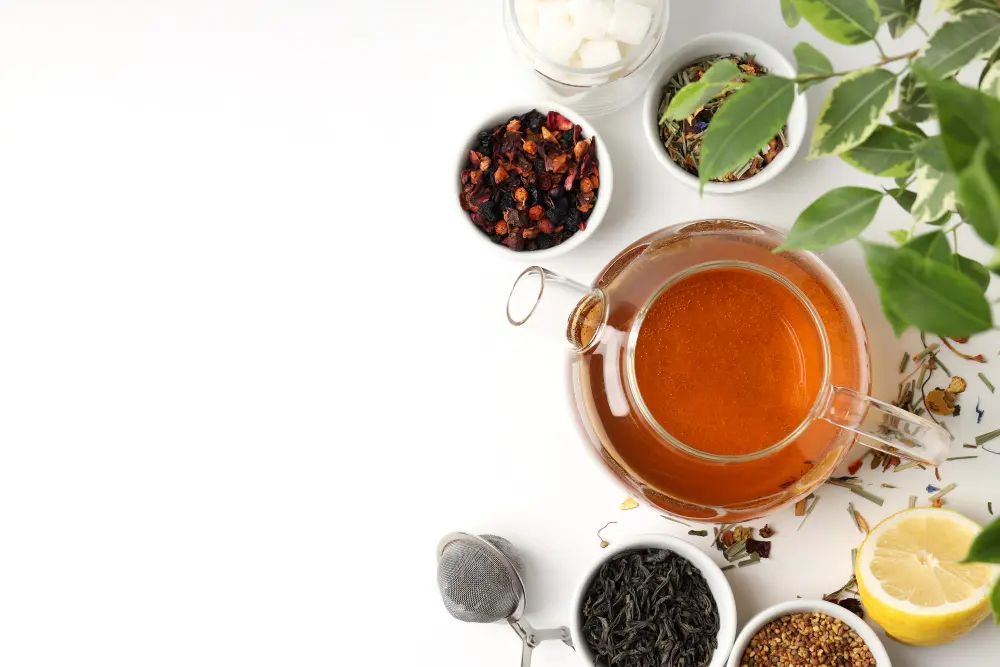
Re-Brewing to Re-Balance
- Don’t be afraid to re-brew and adjust – Rarely will a blend be perfect right away. Expect to tweak and improve.
- Make small iterative changes – Change one variable like a 10% reduction in cinnamon. See how that impacts the overall taste.
- Take detailed tasting notes – Note specifically which aspects you want to adjust like reducing bitterness or increasing floral aroma.
- Adjust strengths and ratios – Use more or less of certain ingredients to re-balance and get closer to your perfect profile.
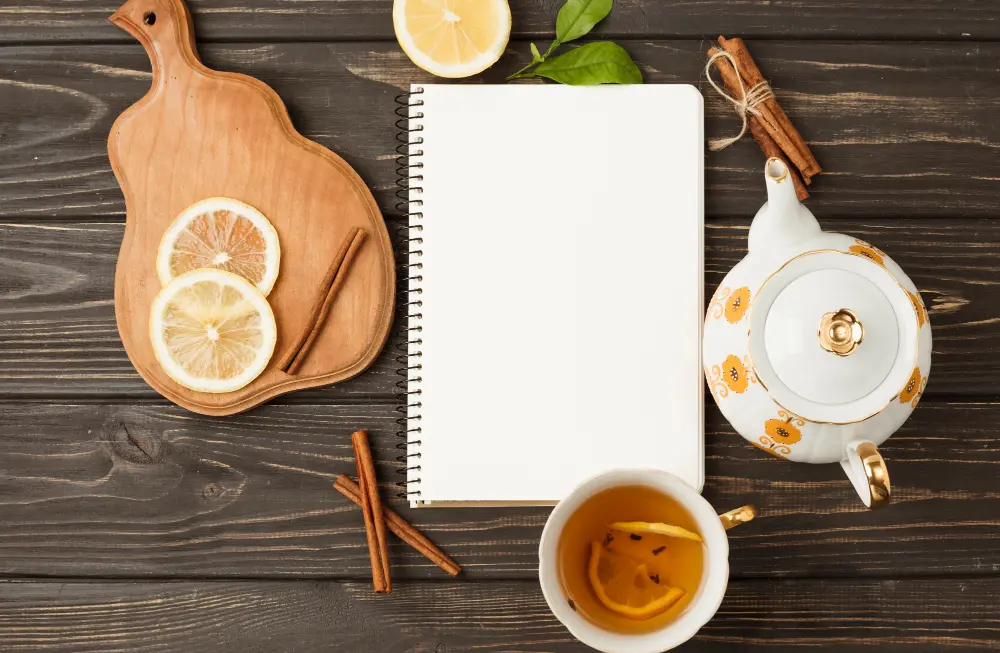
Keep Detailed Blending Notes
- Write down ingredients and ratios – Document the precise recipe including measurements so you can recreate once finalized.
- Note tasting observations – Record how the blend tastes including aroma, flavor, mouthfeel, and aftertaste.
- Log tweak adjustments – Detail the changes you make with each iteration so you can reference.
- Save your final perfected recipe – Once you’ve arrived at your ideal blend, preserve your formula for future enjoyment.
Careful fine-tuning and documentation allows you to recreate that special tea blend again and again.
- DIY TEA FLAVORING KIT: Now you can mix & match to create your own loose leaf tea
Secret #7 – Proper Steeping is Key to Maximizing Homemade Tea Blends
After all the effort blending your custom tea, you’ll want to steep it properly to appreciate the full flavors. Follow these tips for steeping success:
Follow Recommended Water Temperatures
- White tea: 170°F to 180°F – Steep delicate white teas at lower temperatures
- Green tea: 160°F to 180°F – Use cooler water to prevent bitterness
- Oolong tea: 180°F to 200°F – Oolong does well with water just off the boil
- Black tea: 200°F to 212°F – Black tea fans out best in fully boiling water
Adjust Steeping Times for Blended Teas
- Start with shorter times for multi-component DIY blends – Too long may over-extract some notes
- Gradually increase time if more intensity of flavor is desired
- Follow package guidance as a starting point then customize to taste
Use Filtered or Spring Water
- Avoid tap water with off tastes and odors that can clash with delicate tea notes
- Filtered or bottled spring water provides a clean, pure canvas that allows the tea flavors to really shine
Proper temperatures, times, and water are crucial for bringing out the nuanced flavors in your homemade blends. Dial these in perfectly through experimentation with each new tea creation.
Secret #8 – Create Clever Names and Titles for Your Tea Creations
Part of the fun of blending your own tea is coming up with a special name for your recipe. A little creativity goes a long way when naming your blends.
Tips for Naming Your Blends
- Capture the essence or experience of the blend – Transport the tea drinker like “Mountain Retreat” or “Desert Oasis”
- Keep it short and memorable – A concise, catchy name is best rather than a long description
- Get creative and have fun – Allow your imagination to run wild and don’t overthink it
Blend Naming Ideas
- Invoke imagery – Visual names like “Sunrise Serenity” or “Forest Walk” spark the imagination.
- Use common ingredients – Simple names like “Blueberry Black Tea” make the blend transparent.
- Add your location – Customize with your city, state, or region like “Portland Breakfast Blend”
- Reference culture – Names like “Moroccan Mint” add intrigue and interest
- Make it personal – Consider names meaningful to you like “Grandma’s Garden Herbal”
With endless possibilities, naming your tea can be almost as fun as blending it. Find a name that captures the essence of your special mix.

Secret #9 – Design Tea Tin Labels to Share and Gift Blends
Creative packaging completes your homemade tea blends. Designing fun labels for your tea tins or bags makes for great gifts and helps showcase your blend.
Ideas for Stylish Tea Blend Labels
- Download printable templates – Search online for free custom label templates you can edit and print.
- Use bold colors and whimsical fonts – Catch the eye with vibrant colors and playful or retro font styles.
- Include artwork – Incorporate leaves, flowers, or other images related to the blend’s theme.
- Make it personal – Add your own drawings, logo, or photos to make the label special.
Information to Include on Labels
- Catchy tea blend name – Feature your creative tea name prominently and boldly.
- Listed ingredients – Detail what’s inside for transparency and in case of allergies.
- Steeping instructions – Provide recommendations like water temp, steep time, servings.
- Allergen warnings – Note if the blend contains common allergens like nuts or gluten.
- Website or contact – Add your website URL, social media handle, or contact email.
With some DIY spirit, you can design tea tin labels as captivating as your blend inside.
Secret #10 – Store Blends in Airtight Containers
Proper storage is essential for keeping your homemade tea blends fresh and flavorful. Follow these tea storage tips:

Best Storage Containers for Tea Blends
- Glass jars or tins with tight lids – Airtight sealing glass or metal containers prevent air exposure.
- Opaque containers – Block light damage by storing tea in containers that don’t let light through.
- Small 4 oz containers – Use smaller containers to limit air inside and finish blends quicker.
Tips for Proper Tea Storage
- Decant teas from original packaging – Remove tea from bags or boxes into your airtight jars for best freshness.
- Keep in a cool, dark place – Store in a pantry or cupboard away from heat, moisture and sunlight.
- Limit oxygen exposure – Minimize air inside jars by pressing tea down and keeping lids tight.
- Use oldest blends first – Practice first in, first out when enjoying your homemade blends.
With proper storage methods, your tea creations will stay fresh for months to come.
Secret #11 – Share Homemade Blends with Friends and Family
One of the joys of DIY tea blending is sharing your creations with others. Here are fun ways to share with friends and family:
Tea Blending Parties
- Host a tasting party – Let guests sample and provide feedback on your blends. Do fun tea tastings and pairings.
- Make personalized blends – Create custom blends for each guest based on their flavor preferences as gifts.
- Blend together – At your party, guide each guest in making their own blend to take home.
Holiday Gifts
- Give blended teas – Share your homemade blends as unique holiday gifts. Include custom labels describing the tea.
- Send tea blending kits – Gift a homemade kit with ingredients, instructions and teas to blend.
- Add personal touches – Make it extra special by including handwritten steeping notes or blessings.
Sharing tea is a wonderful act of hospitality and bonding. The blends you create make delightful gifts and special moments with loved ones.
Secret #12 – Relax and Enjoy Your Fresh DIY Tea Blends!
After following the entire tea blending process – selecting ingredients, blending, labeling and storage – the final and most important step is relaxation and enjoyment!
Savoring Your Tea Blending Creations
- Take time to slowly appreciate – Set aside daily distractions. Sit, sip and savor your tea mindfully.
- Inhale the aromas – Close your eyes, breath deeply and take in the fragrant scent of your personalized blend.
- Taste every subtle nuance – Allow the unique flavors you crafted to shine through from the first sip to the lingering finish.
- Feel rejuvenated – Notice how your custom creation makes you feel – refreshed, centered, energized.
- Share the experience – Steep a pot to share with friends and family. Chat, laugh and unwind over your hand-blended tea.
After enjoying the process of assembling ingredients, experimenting and designing – now it’s time to sit back blissfully and reap the final rewards of your homemade tea journey.
Savoring Your Tea Blending Creations
- Take time to sit and slowly appreciate your blend – Set aside daily distractions. Mindfully sit, sip and savor the tea creation you put so much care into.
- Close your eyes and experience the aromas – Before the first sip, breathe in deeply through your nose with eyes closed. Appreciate the fragrant botanical scents unique to your blend.
- Taste every subtle nuance – Allow the complex layers of flavors you crafted to shine through from the first sip to the lingering finish.
- Savor the soothing warmth – Let the heat gently relax and rejuvenate you as you unwind with your personalized mug.
- Share your blend with someone special – Steep a special pot to share with a loved one. Chat, laugh and form memories over your hand-blended tea.
After enjoying the creative process of assembling and blending – now is the time to mindfully sit back, and soak in the final rewards of your homemade tea journey.
Conclusion
Creating your own homemade tea blending kit opens up endless possibilities for crafting creative, flavorful tea blends personalized to your taste.
With this guide to assembling your own homemade tea blending kit, you now have all the secrets and tips to get started blending vibrant and delicious teas at home.
Experiment with different teas, herbs, spices and ingredients to invent your own signature blends.
Use the strategies in this article to optimize your tea blending process from start to finish – from curating your ingredients to proper steeping and storage.
Part science and part art, DIY tea blending allows you to become an amateur tea sommelier right in your own kitchen.
The joy is in the journey. Have fun unleashing your inner tea master! Your homemade tea blending kit awaits new infusions.

